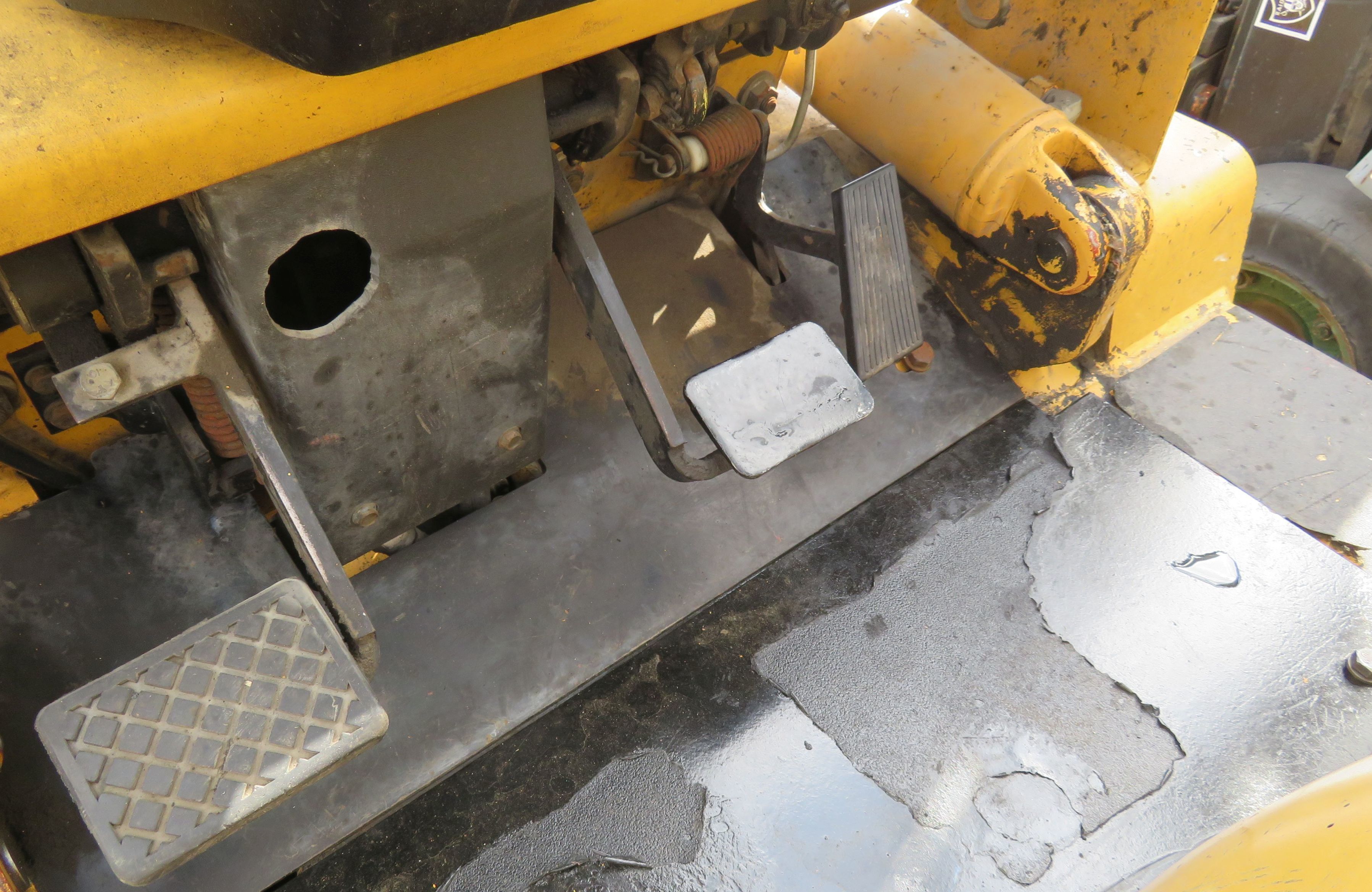8 Overlooked Forklift Parts That Can Break on You
You already know to watch out for worn-out tires, bent forks, and other damaged components on your forklifts. However, when was the last time you checked the brake pedals? The seat belts?
Forklifts contain many parts. Some of which you may not think about. Until they break, that is.
Some of these overlooked parts can trigger a serious accident if they break suddenly on the floor. That's why we have to keep an eye out for signs of wear—anywhere!
In this issue we're listing out 8 of these overlooked parts, talking about how these parts can wear down, and what can happen if they break.

1. Brake Pedals
All brakes wear out. That’s no surprise. I'm not talking about the brakes themselves, but the brake pedal in the forklift cab.
These pads are rubber. When the rubber's new, it's easy to control the forklift's brake. When the rubber wears down from months of regular use, an operator's shoe can slip off the pedal.
Slippage can cause a sudden acceleration—right into a rack. Or a co-worker.
2. Forklift Horn
Depending on your facility, operators may use their forklifts' horns all the time. Or they may not use them at all.
Either way, the horn serves a good purpose: it alerts everyone to where the forklift's going. Something critical for worker safety, on and off the forklift.
Until the horn fails.
You won't know the horn's broken until you try it. If that happens when an operator sees a worker in their path, not paying attention? You instantly have a crisis-in-the-making.
3. Hoses
Hydraulic hoses can crack at the ends, springing leaks. Normally you'd notice a leak fast, from the trail left on the shop floor! However, older hoses can also split in the middle, creating a very thin leak. This will take a while to detect…but in the meantime, it decreases pressure in the engine, causing slowdowns or running rough.
4. Seat Belts
The first time someone sees fraying on a seat belt, they tend to shrug it off since "it hasn't snapped yet." True, but what happens if you hit something? The seat belt can snap in a second, sending you hurtling forward in the cab – or out of it!
5. Spark Plugs
A forklift's spark plugs fire all the time. Eventually you'll get a misfire. In a modern forklift engine, misfires don't automatically spell disaster. Just an occasional issue starting the forklift up. However, over time, one misfiring spark plug can seriously damage the forklift's engine. Operators should not ignore even an occasional start-up issue.
6. Forklift Chains Affecting Forks
Over time, forklift chains will stretch out from use. They can also wear at the pins. Eventually this lengthens the chain out too far. Which causes the forks to drag on the ground, wearing down the forks' heels.
Due to everyday work noise, you may not see or hear the dragging. You'll eventually feel it though—when you end up with ruined forks and a dead chain!
This is the most preventable break on the list here. Adjusting your forklift chains during maintenance prolongs their life. If they've stretched too far, it's time to change the chain. Before it takes the forks out with it.
7. Emergency Brake
Like your car, forklifts have an emergency brake. You never think about it until you need it.
Our service techs have worked on forklifts with failed emergency brakes. The failures range from sticky operation (oil dripped into the e-brake) to broken brake handles (sometimes coming completely out of the socket!).
Lucky for those customers that the forklifts were undergoing maintenance at the time. If the emergency brake fails when a forklift's on the floor, you're instantly in a collision situation!
8. Forklift Keys
A key's just a piece of metal. No big deal if it breaks, right? You must have a duplicate somewhere...
Think about this though. What happens if the key breaks off in the forklift keyhole? The entire forklift's rendered useless. It only takes 1 second.
How to Watch Those Overlooked Forklift Parts
Of these parts, the only one NOT designed to last the life of the forklift is the chain. Let's face it; sometimes things just wear out. That's why we do forklift maintenance in the first place.
The same maintenance can spot when certain parts have worn down. All we have to do is remember to keep an eye out.
- Set a visual inspection schedule, and keep it up. Make it a thorough one—include the forklift keys, seat belts, and the entire brake system in inspections.
- Stay on top of forklift maintenance. Regular maintenance will replace some of these components anyway (e.g. the chain).
- All of these parts show up in Forklifts Group forklift maintenance inspections & replacements.
- All of these parts show up in Forklifts Group forklift maintenance inspections & replacements.
- Remind all workers that you appreciate their input on forklift operation. If Carl checks in for his shift and finds his forklift takes three tries to start, he should report it at once. Could just be a cold day. Or something's wrong.
Until next month!
-The Forklifts Group Team
UPDATED MARCH 2025
Deal of the Month
2023 DOOSAN ELECTRIC BC18 - $36,298
For the March Deal of the Month, we have a nearly-new Doosan electric. Perfect for drive-in rack and tight spaces.

This is a Doosan BC18, a four-wheel sit down with a 3,500# capacity, three-stage mast, and a 36V battery. It's a small, clean-running forklift that will zip around the warehouse floor.
Oh, and it only has 1 hour on it.
We're offering this Doosan electric at only $36,298. We only have a handful of these forklifts left!
To get this Deal, call Forklifts Group West at 800-464-3225 and ask for the March Deal of the Month!


